How to stay fit over 50 with an injury
Let me paint a picture for you –
You’re totally dialed in to your workout routine in your quest to stay fit over 50, and things are going fantastically well.
You’ve discovered a safe, time-efficient strength training program that you’re performing weekly. On your off days, you’re staying active doing moderately taxing activities 2-3 times a week that you enjoy, mostly outdoors.
You feel great, you’re full of energy, you barely have any aches and pains, and you are loving life.
And then something happens.
During the course of everyday life, you sustain a pretty bad injury to your hand. And the doctor says you cannot use that hand at all for 6 weeks.
So you’ve sustained a hand injury, and you can’t grip anything with that hand. Would you still be able to complete an upper-body workout?
Many people would be forced into a training layoff in that scenario. If you are unable to grab a barbell, dumbbell or machine handle, how can you possibly work out?
That exact situation happened recently to a long-time user of my Stay Strong Forever Program. In fact, his injury was so bad he required surgery.
But he’s not missing any upper body workouts.
In this post, I’ll cover how you can stay fit over 50 even after an injury or surgery, show you specific exercises you can do whether training at the gym or at home, and share the science behind these techniques that I recently learned in person from a University of Mississippi researcher.
Key Takeaways
- In most cases, it is beneficial to work out with a casted limb, or any other type of limb injury, rather than not working out at all.
- You get the most benefit by training the rest of your body with a high level of intensity
- Consistency and a positive mindset are key to maintaining fitness in your later years.
The science of staying fit over 50 while injured
Here’s what happened to program user Jay, as he wrote to me in an email:
“I had to decrease and eventually step away from this program that I have learned to fully enjoy. Over a period of time I had developed arthritis at the based of my left thumb. I was dealing with it as best I could then winter crept in. Wrestling with the snow blower and then shoveling ( remember, I live in New Hampshire); it finally put be over the edge. I had thumb CMC Arthroplasty surgery on April 6th and I am now in the healing/rehab mode.
Yesterday, May 1, I started working out again albeit a modified program. I am using the principles of your program. I read a number of articles about working out with a casted limb. From the literature I read it is actually beneficial to do so, rather then not working out at all. Not just an arm cast or splint but for those who may be in a leg cast. Obviously one needs to modify exercises. I am coming along well. I’m in a semi-soft splint and I’m doing my OT twice a day, everyday at home.”
Jay is correct – it actually is beneficial to work out with a casted limb, or any other type of limb injury, rather than not working out at all. And there’s a scientifically proven, physiological reason why.
Cross-education of strength
In March of 2023, I attended the Resistance Exercise Conference in Minneapolis. The conference brings together some of the top researchers and fitness practitioners in the world.
One of the presentations was titled “An Education In Cross-Education: What’s Relevant for You?” The presenter was Vickie Wong, a researcher from the University of Mississippi. (Update: Dr. Wong is now with Solent University in the UK.)

Cross-education refers to a physiological principle of adaptation. It means that if you have a limb that is immobilized for whatever reason, if you perform strengthening activities using the opposite limb, there will be a crossover effect to the immobilized limb, and this will not only mitigate the weakening effects of immobilization, but in many cases the immobilized limb will actually get stronger, even though it’s not doing anything.
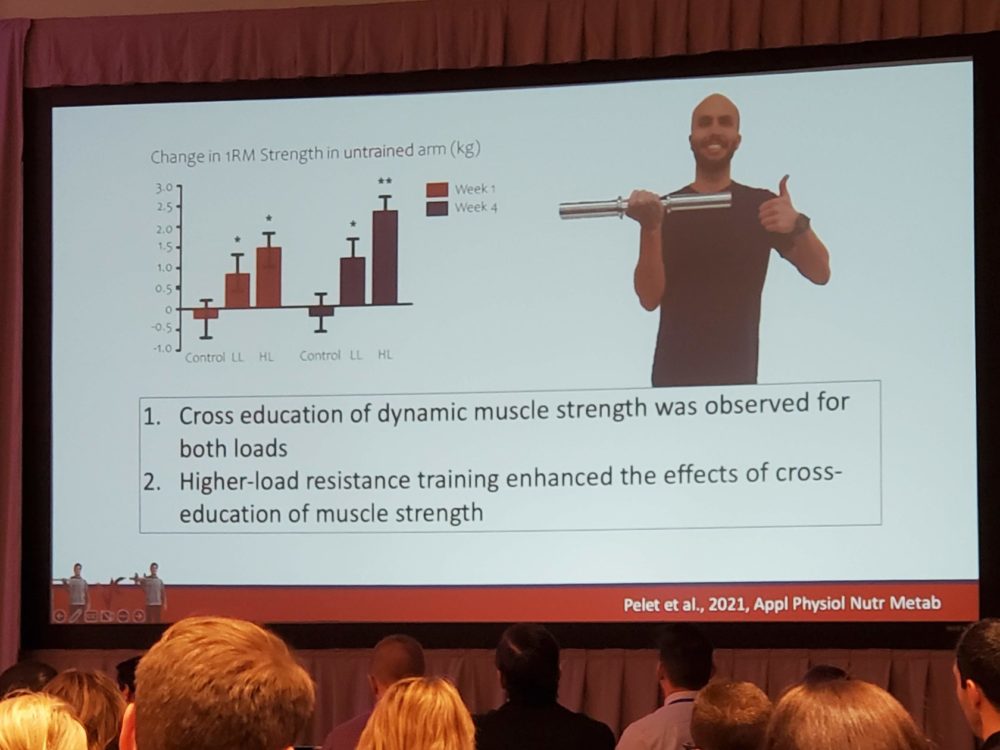
The reason this happens is there a neurological signal sent by the brain from the working limb to the immobilized limb which stimulates the muscles in the injured limb. It’s your brain’s way of trying to protect you and help you survive.
KEY POINT: In the presentation slide above, notice that it says that “higher-load resistance training enhanced the effects of cross-education of muscle strength”. In other words, you get the most benefit by training the rest of your body with a high level of intensity, just like I always say on this site.
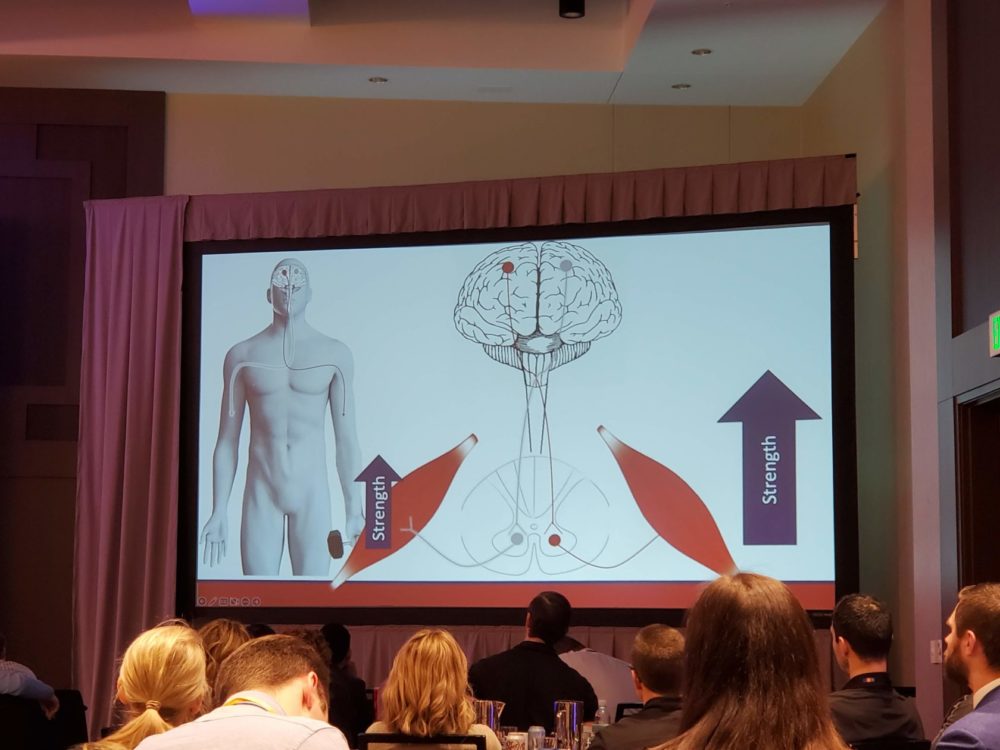
I’ve used this principle throughout my physical therapy career to treat stroke patients. And over and over again, I’ve seen patients benefit, due to the neurological crossover effect.
So what specific exercises can Jay (or anybody else) do so that they can utilize cross-education, stay strong and fit, not re-injure themselves, and even promote faster healing of their injury?
Let’s go through a few of them.
1 arm machine exercises:
Shoulder Press
Pulldown
Seated row
1 arm free weight exercises:
Dumbbell shoulder press
Incline bench row
Dumbbell curl
1 leg machine exercises:
(Note: I don’t recommend performing the leg press with 1 leg due to increased torque on the pelvis, which can lead to injury. You don’t want to get a new injury while working around an existing injury!)
Leg extension
Leg Curl
 1 leg free weight exercises:
1 leg free weight exercises:
Standing calf raise
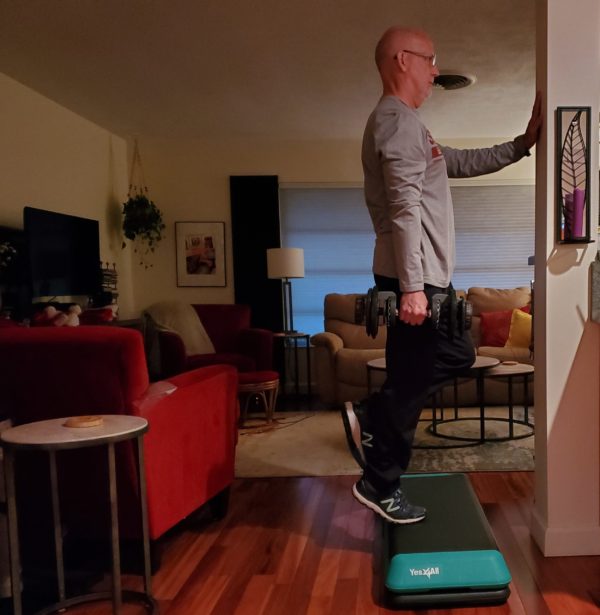
You are only limited by your imagination when training around an injury. Give some of these techniques a try, and you’ll stay in great shape while waiting for your injury to heal.
By following these tips and maintaining a consistent workout routine, you can lead a healthy and active life well into your 50s and beyond.
Thoughts or questions on staying fit over 50 after an injury? Leave a comment below!
Related content on how to stay fit over 50:

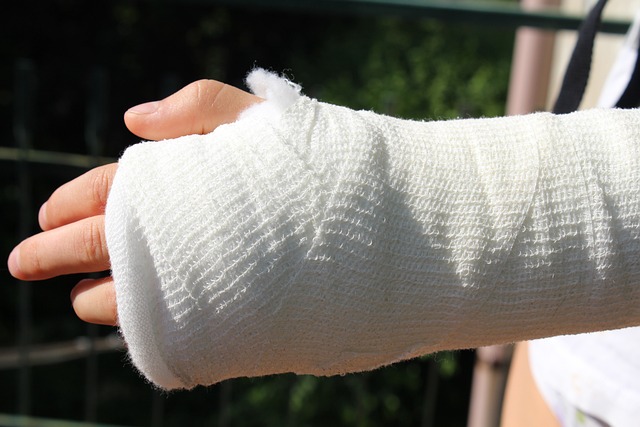
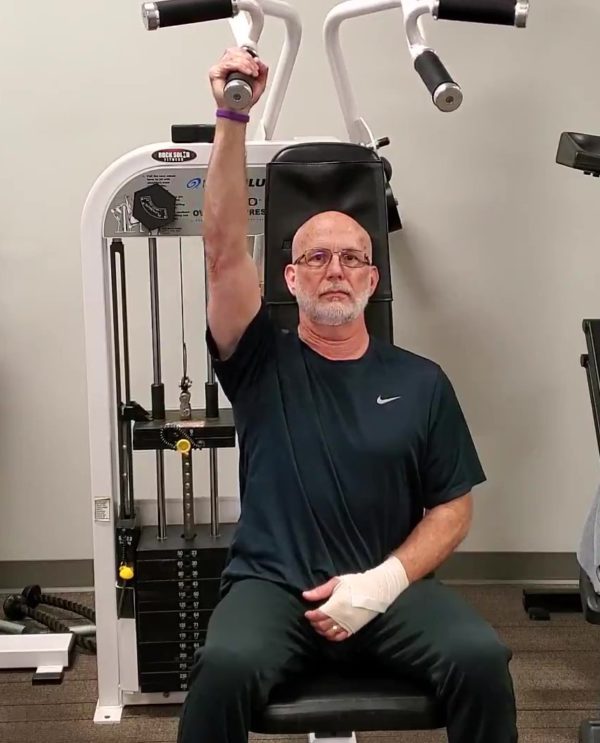
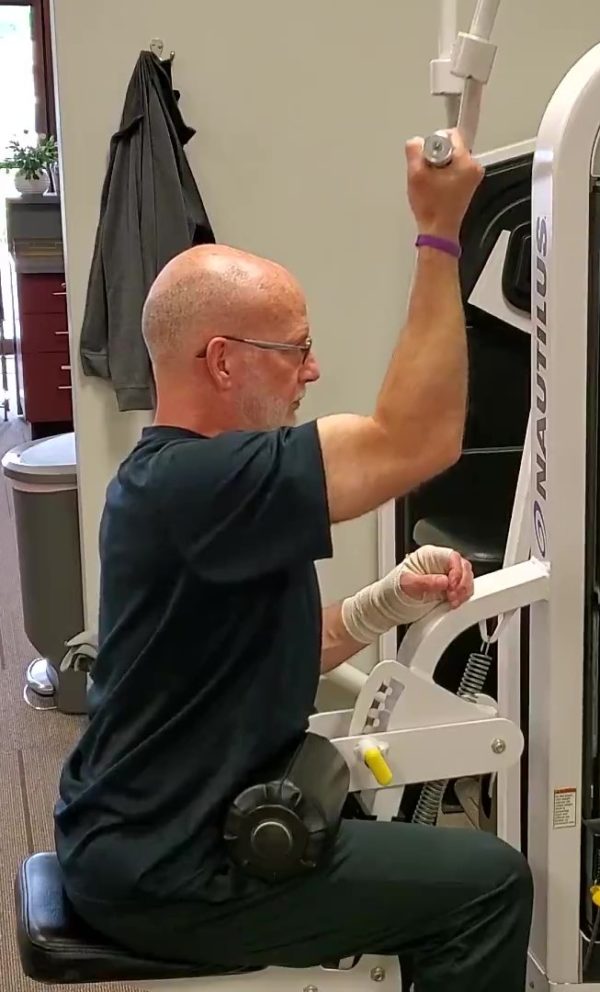
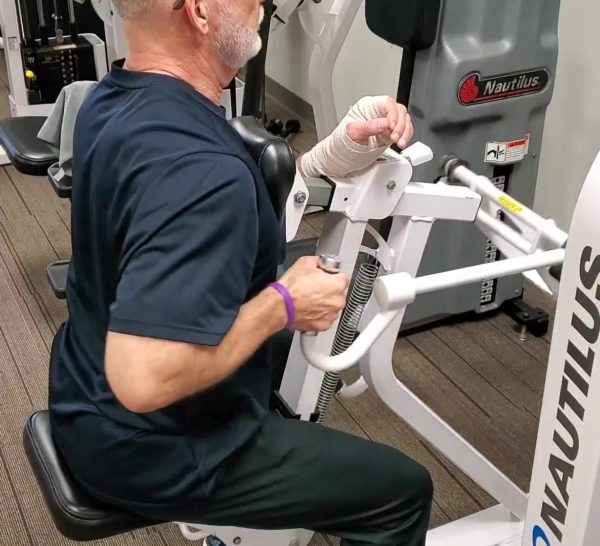

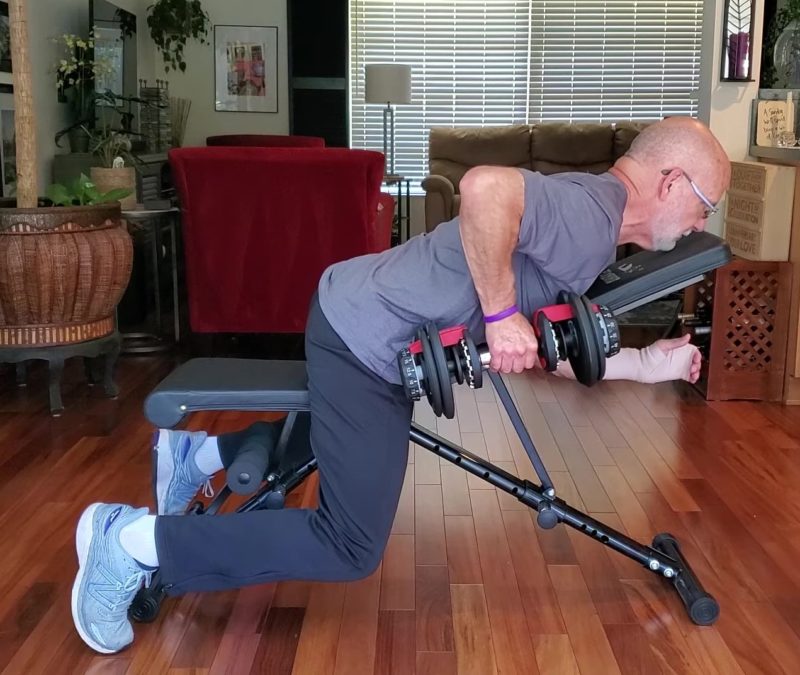
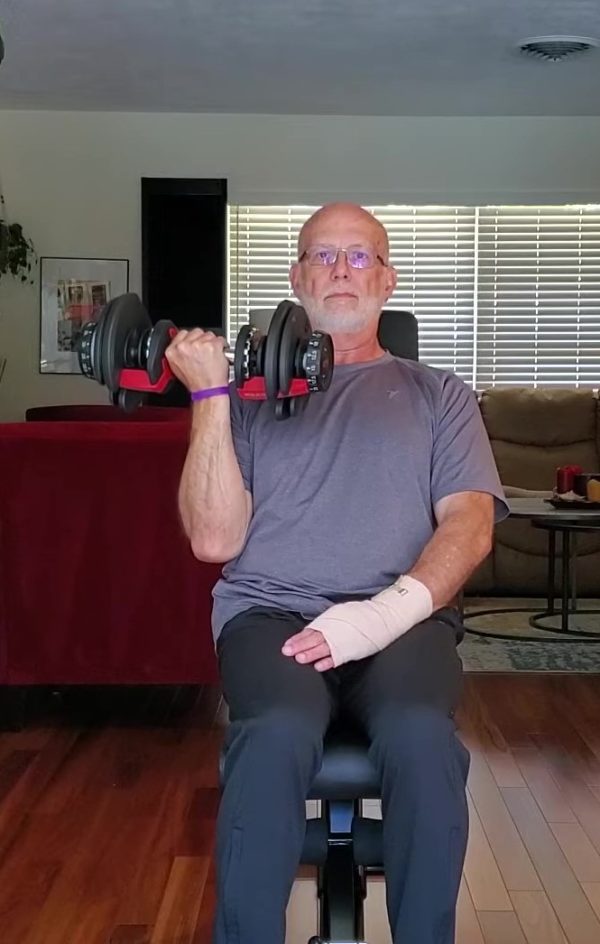

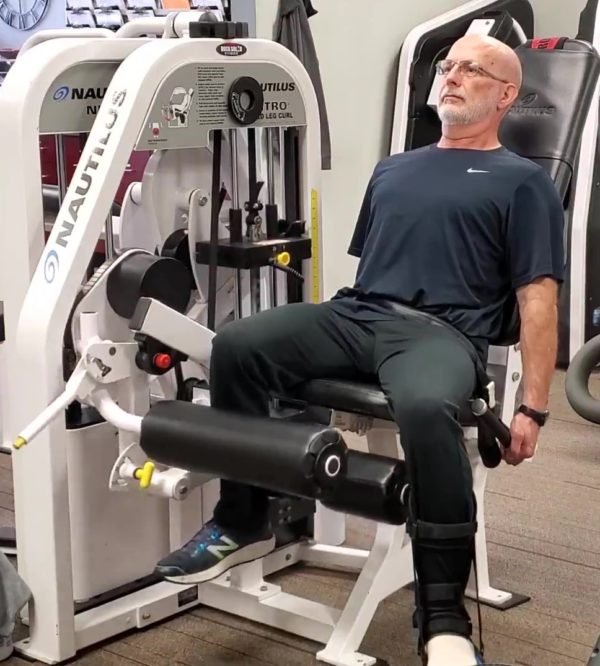
2 Comments. Leave new
Hi Dave: Your client William here. Thanks for the highly informative new post. Lots of great and useful information. Keep the great posts coming and thank you for all you do for us. Looking forward to the upcoming home workout program!
Thanks William, glad you enjoyed it! The home workout program is now available, you can check it out here.